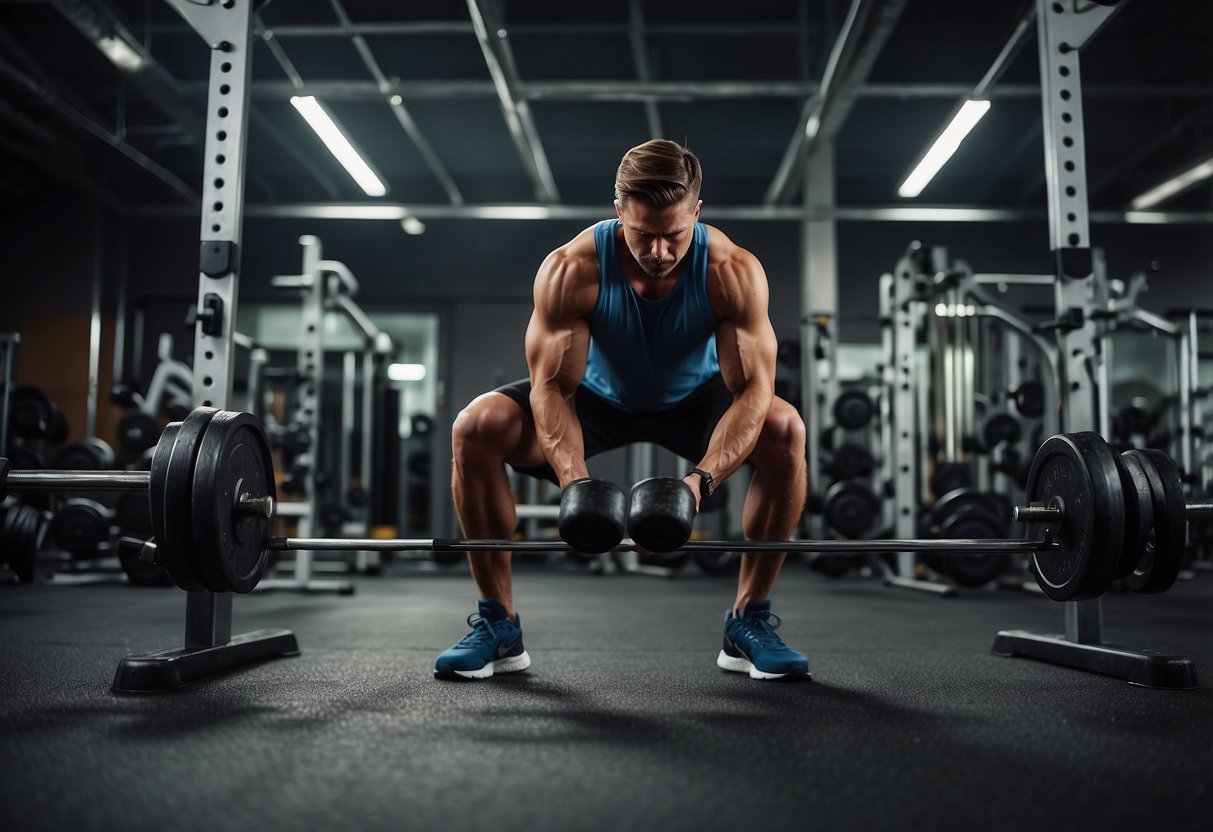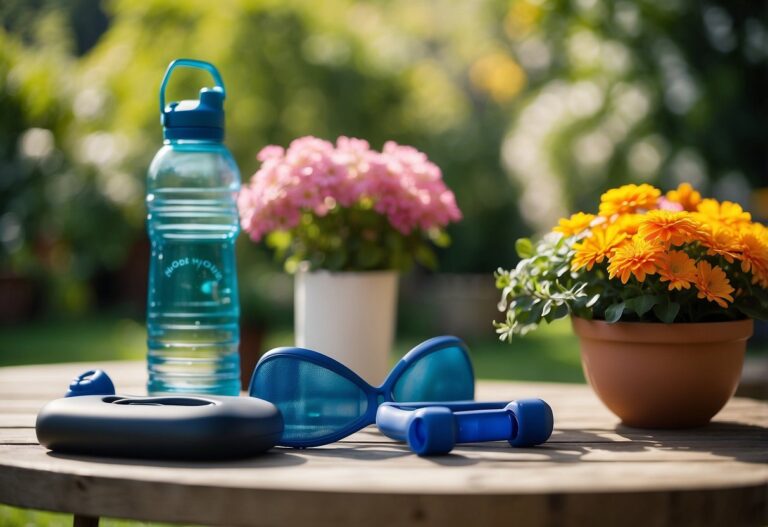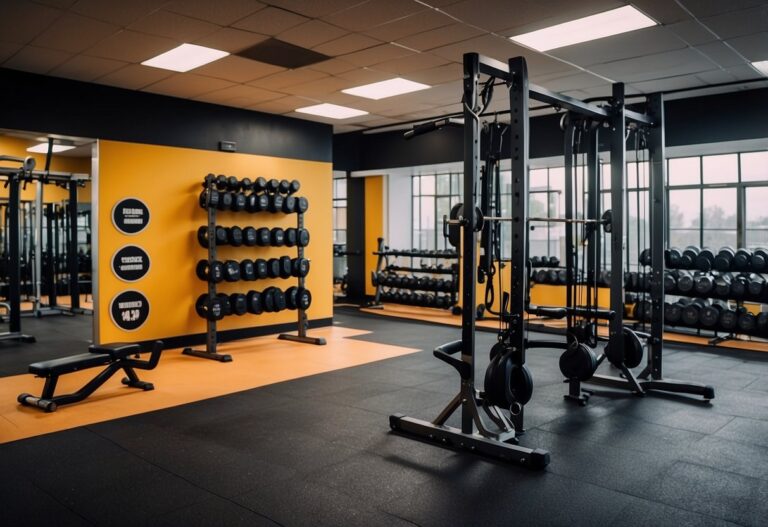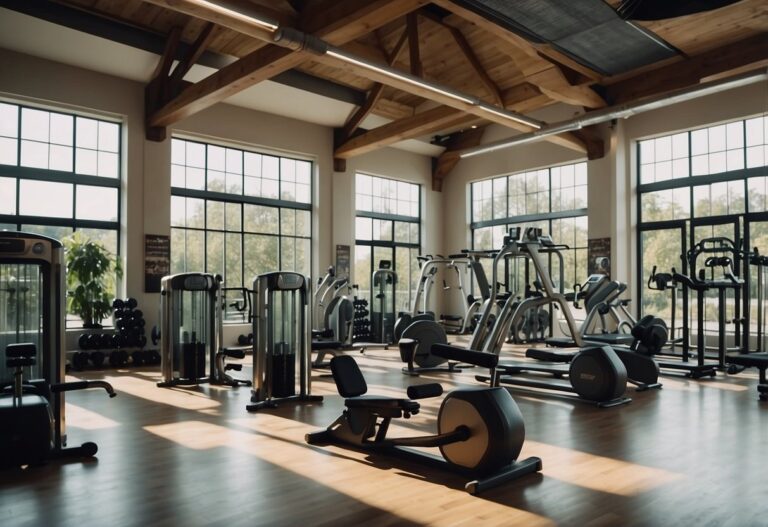When it comes to losing weight, you might find yourself feeling overwhelmed with where to start. There’s a lot of advice out there, and it can be hard to know which tips will actually work for you. In this article, you’ll find simple and effective workout tips that can help you achieve your weight loss goals.

Exercising not only helps you shed those extra pounds, but it also boosts your mood and overall health. Whether you’re new to fitness or looking to mix up your routine, these tips are designed to fit into your lifestyle and keep you motivated. You’ll learn about various exercises and how they can make a real difference in your weight loss journey.
Interval Training
Interval training is a game-changer. It mixes short bursts of intense exercise with periods of rest or lower intensity. This kind of workout can be more effective than regular cardio.
High-Intensity Interval Training (HIIT) is a popular form of interval training. You push yourself hard for a short time, then recover. For example, sprint for 30 seconds, walk for 60 seconds, and repeat.
Interval training boosts your metabolism. You burn calories not just during the workout, but also after you’ve finished. This is due to the “afterburn effect”, where your body continues to burn fat even while at rest.
Strength Training
Strength training is a fantastic way to lose weight effectively. By building lean muscle, you can boost your metabolism and burn fat more efficiently.
Consider incorporating exercises like deadlifts and dumbbell rows. These moves not only target multiple muscle groups but also keep your workouts engaging.
Aim for three to four strength training sessions each week. This consistency helps you see better results.
Remember to use proper form to avoid injuries. If you’re unsure about your technique, asking a fitness coach for guidance can be really helpful.
Feel free to gradually increase the weights as you get stronger. This progression helps to continually challenge your muscles.
Strength training isn’t just about lifting heavy. Bodyweight exercises like push-ups and squats are also effective.
Adding short rest periods between sets, typically 1-3 minutes, can also help in burning extra calories.
Yoga for Flexibility
Yoga can be a great way to improve your flexibility. By practising different poses, you will gradually stretch your muscles and joints. This helps you to become more limber and less prone to injuries.
Think about including poses like Downward Dog and Cat-Cow. These are great for stretching your back and hamstrings.
Try to hold each pose for 30 seconds to 1 minute. Listen to your body and never push too hard. Consistent practice is the key to seeing progress in your flexibility.
You might find classes like this 20 Minute Full Body Yoga Workout helpful for beginners. Enjoy your journey towards a more flexible body!
High-Intensity Interval Training (HIIT)
High-Intensity Interval Training (HIIT) is a fantastic way to lose weight quickly. These workouts alternate between intense bursts of activity and short rest periods. You push your body hard, then give it a brief rest, and repeat.
HIIT can be very effective because it keeps your heart rate up and burns more fat in less time. For example, you might do 45 seconds of jumping jacks followed by 15 seconds of rest.
Many people find HIIT more engaging than steady-state cardio. With various exercises like sprints or jump squats, it never feels boring. You can adjust the intensity to match your fitness level, which makes it a versatile choice. Check out some of the best HIIT workouts for weight loss.
Swimming
Swimming is a fantastic way to lose weight and get fit. It’s a low-impact exercise, which means it’s easier on your joints compared to activities like running. This makes it perfect for people with sore knees or ankles. Plus, you can exercise for longer without getting injured.
Did you know swimming burns a lot of calories? For example, a 185-pound person can burn around 420 calories by swimming laps for 30 minutes. This makes it as effective as running or cycling.
You can also add water weights to your routine. Doing bicep curls with these between laps can help build strength and tone muscles. The water creates extra resistance, making your workout more efficient.
If you’re new to swimming, start with simple strokes like the front crawl. Swim for short intervals and gradually increase the time and intensity. This can help create a caloric deficit, essential for weight loss. Aim for consistency and try to swim a few times a week for the best results.
For more details, check out this swim guide.
Cycling
Cycling is a fantastic way to lose weight. It’s not only effective but also enjoyable. Many people find it easier to stick with regular cycling than other exercises.
To burn more calories while cycling, try to maintain a steady pace. According to experts, cycling at a moderate pace can burn 400 to 750 calories per hour.
You can also mix things up by alternating your speed. For example, adding 1 to 3 miles per hour to your speed for a few minutes, then easing up for a rest period, and repeating this cycle several times helps to increase calorie burn. This method keeps your workouts engaging and less monotonous.
Cycling is also gentle on the joints compared to other high-impact exercises. This means you can cycle regularly without worrying about injuries, which is especially good if you have issues with your knees or back.
Indoor cycling classes can be a great option if the weather is not ideal. These classes often have structured workouts that can push you harder than you might push yourself.
So, where can you start? Consider using a bike to commute, run errands, or just explore your local area. This adds more physical activity to your day without feeling like a chore.
Pilates for Core Strength
Pilates is a fantastic way to strengthen your core. Many people find that Pilates exercises challenge their mid-body strength in ways other workouts don’t.
Try starting with an eight-minute Pilates core workout. This routine can really set your abdominal muscles on fire.
Another great option is a seven-move Pilates routine. These exercises help improve balance and correct any muscle imbalances.
For beginners, a 20-minute deep-core workout is perfect. It helps improve your posture and build core strength.
Remember, consistency is key with Pilates. Engaging your core and focusing on posture can make a big difference in your results.
Bodyweight Exercises
Bodyweight exercises are great if you’re looking to lose weight. You can do them anywhere, without any equipment. They help build muscle and burn fat while improving your overall fitness.
Push-ups are a classic move. They target your chest, shoulders, and triceps. Start with your knees on the ground if you’re a beginner.
Another simple exercise is the squat. This move strengthens your legs and core. It’s perfect for building lower body strength.
Try adding planks to your routine. Planks engage your core and improve stability. Hold for 15-30 seconds to start.
Jumping jacks get your heart rate up quickly. They are effective for burning calories and improving cardiovascular health. You can do these between other exercises to keep your heart rate up.
Example Routine
Combine these moves for a quick, effective workout:
- 10 Push-ups
- 15 Squats
- 30-second Plank
- 20 Jumping Jacks
Repeat this circuit two more times to get a solid workout. If you’re looking for more ideas, check out these bodyweight exercise options.
Kettlebell Workouts
Using kettlebells can be a game-changer for your weight loss journey.
An effective workout to try is the AMRAP (As Many Rounds As Possible). Choose 3-5 exercises, like kettlebell swings and goblet squats, and rotate through them for 20-30 minutes. Rest only when you need to.
Another great routine is Tabata. Do intense 20-second sets, followed by 10 seconds of rest. You can stick to kettlebell moves or mix them with exercises like push-ups.
Kettlebell Clean and Press is another powerful workout. This move uses your whole body and helps in burning calories effectively. Remember to maintain correct form to avoid injuries.
Kettlebell workouts can be a fun and effective way to lose weight while keeping things simple.
Running
Running is a fantastic workout for weight loss. It burns calories and boosts your metabolism. To get started, try running for 30 minutes a day. If you’re new to running, mix running with walking. Start with short intervals and gradually increase your running time.
Incorporating different types of runs can also be beneficial. For example, interval training can be very effective. This means alternating between running and walking. A simple plan might include one minute of running followed by one minute of walking.
Developing a habit is crucial. Make running a routine part of your week. Aim for three to four runs weekly. Consistency will help you see results.
For more tips on how to maximise your weight loss, check out the Ultimate Weight Loss Running Plan. Running can be a fun and rewarding way to lose weight if you stick with it!
Understanding Caloric Deficit
Creating a caloric deficit involves consuming fewer calories than your body uses. This process triggers weight loss by making your body burn stored fat for energy.
The Basics of Calories In vs. Calories Out
A caloric deficit happens when your calorie intake is less than what’s needed for energy. Calories In comes from everything you eat and drink. Calories Out includes various factors:
- Basal Metabolic Rate (BMR): Calories used just by being alive (breathing, maintaining body temperature).
- Physical Activity: Calories burnt through movement and exercise (walking, running, lifting weights).
- Thermic Effect of Food (TEF): Energy spent digesting, absorbing, and storing food.
To achieve weight loss, you can either eat fewer calories, increase your physical activities, or combine both methods. For instance, if your body requires 2,500 calories a day and you consume 2,000, you are in a 500-calorie deficit.
How Caloric Deficit Promotes Weight Loss
When your body is in a caloric deficit, it needs to find alternative energy sources. The primary source is stored fat. This process happens because your body converts stored fat into energy to fill the gap left by consuming fewer calories.
By maintaining a caloric deficit over time, you will steadily lose weight. For example, to lose about 0.5 kg per week, you need an approximate daily deficit of 500 calories.
Options for creating a deficit include:
- Eating smaller portions or choosing lower-calorie foods.
- Increasing exercise: Engaging in activities like running, cycling, or even brisk walking.
This strategic approach ensures that you achieve weight loss gradually and sustainably.
For more information on how to safely create a caloric deficit, you can refer to this guide.
Effective Cardio Workouts
To maximise weight loss through cardio, it’s important to vary your workout routines. Understanding the benefits of High-Intensity Interval Training (HIIT) and the role of steady-state cardio can help you achieve your fitness goals.
Benefits of High-Intensity Interval Training (HIIT)
HIIT is a powerful tool for burning calories and losing weight. These workouts involve short bursts of intense activity followed by brief recovery periods. HIIT sessions are usually shorter than traditional workouts but highly effective.
One key advantage is its ability to boost your metabolism. Even after you’ve finished your workout, your body continues to burn calories at a high rate. This is known as the “afterburn effect.” HIIT can be done with various exercises, such as sprints, jump squats, or even on a stair climber.
Additionally, HIIT improves cardiovascular health and endurance, making everyday activities easier. Beginners should start slow to avoid injuries, gradually increasing intensity over time. So if you’re pressed for time, HIIT is a great way to get an effective workout in a short period.
Incorporating Steady-State Cardio
Steady-state cardio involves maintaining a constant, moderate level of intensity for a prolonged period. Activities like jogging, power walking, or cycling are common examples.
One major benefit of steady-state cardio is its accessibility. It’s easier on the joints compared to high-intensity workouts, making it suitable for everyone, including beginners and older adults. Steady-state cardio is also effective for building cardiovascular endurance and can be a great way to clear your mind.
It’s essential to find a routine you enjoy to ensure consistency. Whether it’s a morning run or an evening bike ride, incorporating steady-state cardio into your weekly plan can aid in sustained weight loss. Aim for at least 30 minutes, five days a week to see significant benefits.







